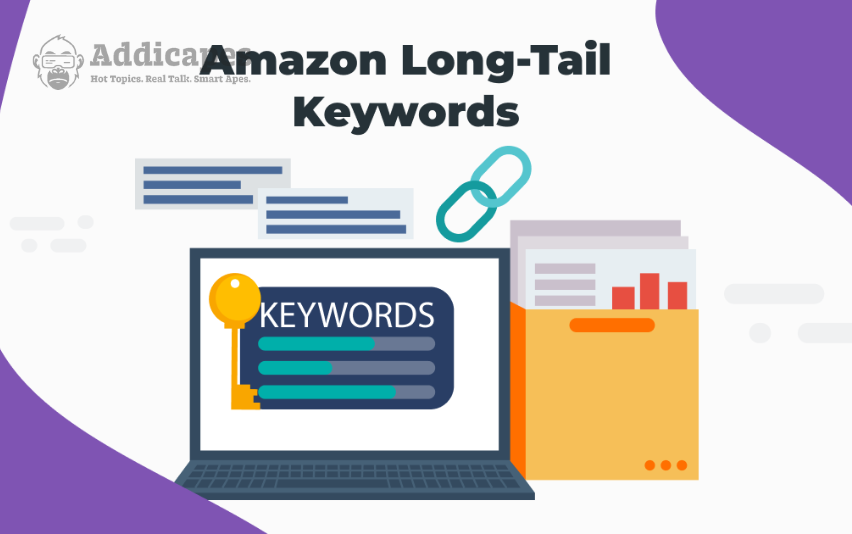The Debate Around Long-Tail Keywords on Amazon
When it comes to selling on Amazon, SEO is everything. The marketplace runs on a complex algorithm (A9, now evolving into A10) that determines which products appear first when shoppers search. For years, long-tail keywords—phrases that are more specific, longer, and less competitive—have been a winning strategy for sellers trying to stand out.
But in 2025, with millions of sellers competing, many new sellers ask: Is the long-tail keyword strategy still effective on Amazon?
The short answer: Yes, but it works differently now. Let’s break it down.
What Are Long-Tail Keywords in Amazon SEO?
Long-tail keywords are search phrases that go beyond basic one- or two-word terms. Instead of targeting broad, competitive keywords like “wireless headphones”, you go after specific search terms like “wireless headphones with noise cancellation for travel”.
Benefits of Long-Tail Keywords:
- Lower competition: Easier to rank for.
- Higher conversion rate: Shoppers searching for detailed phrases know exactly what they want.
- Relevant audience: Attracts buyers closer to making a purchase.
On Amazon, long-tail keywords often reflect buyer intent. For example:
- “Organic dog food for small breeds”
- “Ergonomic office chair under $200”
- “Travel backpack waterproof with USB charger”
These are goldmines for sellers who optimize listings effectively.
Why Long-Tail Keywords Still Matter on Amazon in 2025
Despite algorithm changes and rising competition, long-tail keywords are still highly effective on Amazon. Here’s why:
1. Buyer Intent Is Clearer
Shoppers typing specific queries are usually ready to buy. Ranking for “stainless steel water bottle with straw 32oz” is far more valuable than trying to rank for just “water bottle”.
2. Voice Search & AI Shopping Growth
With Alexa, Google Assistant, and AI-driven shopping recommendations, search queries are becoming longer and more conversational. This naturally increases the importance of long-tail keyword targeting.
3. Lower Advertising Costs
Amazon PPC campaigns for broad keywords are expensive. Long-tail keywords reduce ACoS (Advertising Cost of Sale) while improving conversion rates, making ads more cost-effective.
4. Product Differentiation
Long-tail keywords allow niche sellers to compete against big brands by targeting underserved searches.
How Amazon’s Algorithm Treats Long-Tail Keywords
Amazon’s A10 algorithm prioritizes:
- Relevance – How closely your product matches the search query.
- Conversion rate – Does your product actually sell after being clicked?
- Engagement metrics – Click-through rates, reviews, and repeat purchases.
By including long-tail keywords in your product title, bullet points, backend search terms, and description, you signal relevance. When buyers convert on those searches, the algorithm rewards your product with higher rankings.
Practical Ways to Use Long-Tail Keywords on Amazon
1. Optimize Product Titles Naturally
Example: Instead of just “Bluetooth Earbuds”, write:
“Bluetooth Earbuds with Noise Cancellation, Long Battery Life, Waterproof, for Gym & Travel”
2. Use Long-Tail Keywords in Bullet Points
Highlight specific features shoppers are searching for, like “vegan leather,” “adjustable straps,” or “fits laptops up to 15 inches.”
3. Leverage Backend Search Terms
Amazon lets you add keywords in hidden fields. Fill these with long-tail variations and synonyms.
4. Run PPC Campaigns With Long-Tail Keywords
Instead of spending $5 per click on “headphones”, target “best wireless headphones for running under $100”—cheaper and more likely to convert.
5. Use Tools for Research
Tools like Helium 10, Jungle Scout, and Ahrefs show real search data for Amazon long-tail keywords. Look for high-volume, low-competition terms.
Case Example: Long-Tail Keyword in Action
A seller offering “ergonomic office chairs” might struggle to rank for that broad term. Instead, they optimize for:
- “ergonomic office chair with lumbar support under $200”
- “adjustable ergonomic chair for home office with armrest”
By using these long-tail keywords in the title, description, and PPC ads, the product starts showing up in relevant searches where buyers are ready to purchase.
The result? Higher conversion rates, more reviews, and eventually rankings for broader terms.
Common Mistakes to Avoid With Long-Tail Keywords
- Keyword stuffing unnaturally – Don’t just jam words into titles; keep it readable.
- Ignoring backend keywords – Many sellers skip this hidden goldmine.
- Not tracking performance – Test, track, and adjust your long-tail keyword strategy.
- Focusing only on volume – High-volume keywords are tempting, but conversions matter more.
Future of Long-Tail Keyword Strategy on Amazon
Looking ahead, long-tail keywords will only become more important due to:
- AI-powered search suggestions
- Voice commerce growth
- Rising competition on short-tail keywords
- Smarter buyers demanding specific features
In 2025, the sellers who thrive won’t be those chasing broad, competitive keywords. They’ll be the ones who master long-tail keyword optimization and match their listings to real buyer intent.
Final Thoughts
So, is the long-tail keyword strategy still effective on Amazon in 2025? Absolutely. While the competition has intensified, the fundamentals of buyer intent, conversion, and relevance make long-tail keywords one of the most reliable ways to grow.
By strategically using them in titles, descriptions, backend fields, and PPC campaigns, sellers can rank faster, spend less on ads, and convert more buyers.
If you’re serious about scaling your Amazon business, don’t ignore long-tail keywords—they’re still the backbone of a smart Amazon SEO strategy.













